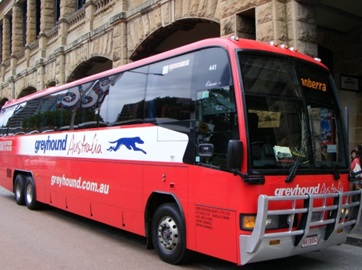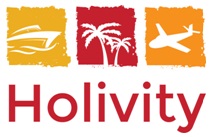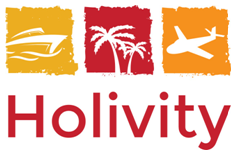Backpacking the East Coast of Australia – Sydney to Port Douglas in 4 weeks
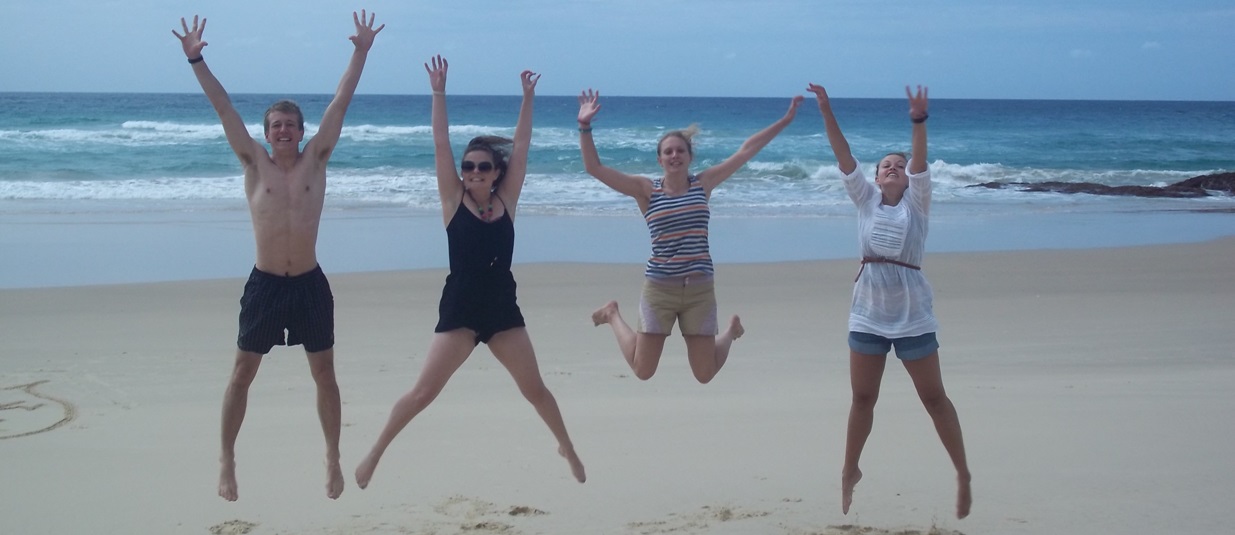
Overview
On this trip we covered the classic east coast route from Sydney, the state capital of New South Wales with its distinctive Opera House and dramatic harbour bridge, in the south to the ex-mining and forestry town, and now gateway to the Great Barrier Reef, Port Douglas in the north. We travelled from the end of July to the end of August, venturing 1,550 miles by Greyhound buses and staying at YHA hostels along the way. August is the end of Australia's winter but given its temperate climate it was certainly not cold, especially for the northern part of our trip. We found Australia had a laid back atmosphere with very welcoming locals and lots to offer, ranging from seeing turtles, rays, sharks and 'nemo' fish diving the Great Barrier Reef, zip wiring over tropical rainforests and rock climbing the famous Kangaroo rocks to whale watching, yachting around the beautiful Whitsundays islands, surfing, theatre, museums, horse riding, white water rafting and lots of wildlife. We've detailed what we found to be the main attraction place-by-place below but if you've already been please feel free to add your own personal experience of different places and activities in the comments section.
Main Attractions Place-by-Place
Sydney (Day 1-4)
During our time in Sydney we stayed at the Sydney Harbour "The Rocks" YHA, the only backpacker hostel in the city's historic harbour-side district. It has a rooftop terrace with stunning views out over Sydney harbour and the Opera House and provided an ideal gateway to explore the city. Built above archaeological remnants of colonial Sydney, even the steps up to the hostel reception provide an interesting view into Sydney's history. The Rocks was established shortly after the colony's formation in 1788 with buildings mainly constructed from local sandstone, which is what gives the area its name. The Rocks is close to Circular Quay and the iconic Harbour Bridge with a variety of souvenir and craft shops as well as many themed and historic pubs. These is a market of about 100 stalls that operates every weekend and a number of historic walks through the area, visiting buildings such as Cadmans Cottage, Sydney Observatory and the Dawes Point Battery, the first fortified position in New South Wales.
Having explored the city during the first afternoon, in the evening we went to see Of Mice and Men at the Sydney Opera House. This classic by John Steinbeck tells the story of George Milton and Lennie Small, two displaced migrant ranch workers, who move from place to place in California in search of new job opportunities during the Great Depression in the United States. Having (in hindsight very naively) thought it was a play rather an opera we looked at each other in surprise after the initial burst of song was clearly going to continue throughout, but it was a fantastically moving and emotive performance, which was followed by drinks at the opera house bar with views looking out over the harbour. The night was spent The Ivy bar on George Street, a huge 'sophisticated urban playground for adults' with a number of unashamedly extravagant areas, including a grill restaurant, Japanese eatery, lounge space and turquoise-walled Den where DJs play, each with their own personality positioned around a central courtyard. The Ivy is a must visit for Sydney first timers.
On day 2 I went to do the Sydney Harbour Bridge climb, an ascent of the arches of the bridge with iconic views over the city. The centre equip you with all the outdoor gear you’ll need for your Climb based on the day’s weather conditions (we were given a full body suit) and health & safety essentials such as a harness and carabiner. The climb was led by our climb leader Delphi who entertained us with stories about the history of the Bridge from its construction, to its opening in 1932, right through to its place in modern day celebrations. The summit of the bridge is 134m above sea level, right in the heart of Sydney Harbour and provides an uninterrupted panoramic view of the city and surroundings. If you don't fancy the climb itself, you can always try the Pylon Lookout to see the bridge instead (free for those doing the bridge climb). After the bridge climb I went to see the World Heritage listed Hyde Park barracks, one of the most significant convict sites in the world, to learn about Sydney's aboriginal history. A crossroads for tens of thousands of people, Hyde Park barracks played a central role in the world’s largest and longest-running system of convict transportation.
On day 3, I took a trip to the Blue Mountains, a rugged region about 30 miles or a little over an hour west of Sydney with dramatic scenery, encompassing steep cliffs, eucalyptus forests, waterfalls and villages dotted with guesthouses, galleries and gardens. When Europeans arrived in Australia, the Blue Mountains had already been inhabited for several millennia by the Gundungurra people. There are lots of bush walking trails with a personal highlight being one to Echo Point with views of the storied Three Sisters sandstone rock formation. The Blue Mountains provide the opportunity to see native animals in their natural habitat and ride the steepest railway in the world. It is possible to do an afternoon cruise along the Parramatta River to unwind on your way back to Sydney.
The morning of day 4 was reserved for one of the compulsory activities whilst in Australia - surfing, of course. The best place to surf close to Sydney is Bondi Beach which is just half an hour away by train from Circular Quay (the harbour). Bondi is well known for its surfing with golden sands and crystal turquoise waters. We took a group lesson with a company called Lets Go Surfing who have a small shop on the beach front with really helpful staff who will kit you out with wetsuit and board - we just had to take swimmers and a towel. As first timers, the 2 hour introductory lesson was enough to get us all standing up on our first wave, with some spectacular falls thrown in for entertainment. In the afternoon we took a ferry to Manly, Sydney's northern coastal peninsula. Manly is characterised by beaches, bike trails, walking routes, seagulls, fishermen and boats and, like most of Australia, has a laid back vibe. After enjoying alfresco dining at a local fish and chips for lunch and relaxing by one of the many beaches we took a walk to North Head, the upper part of the 1.5 mile entrance to Sydney harbour.
Travelling from Sydney to Byron Bay
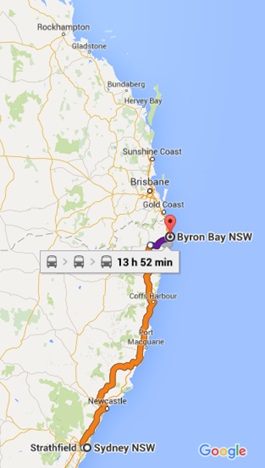
Byron Bay (Day 5-6) - a bit bleary eyed upon first arrival to Byron Bay we quickly shook this off with a whale-watching kayak trip. We did this with a company called Go Sea Kayak Byron Bay who were well organised, friendly and keen to show us the wonderful wildlife off the beach. One part of Byron Bay is actually a Marine Park and whilst the whales were the main attraction for me we also saw dolphins and turtles through the clear blue waters. The guides led us around what is one of Australia's most easterly points whilst telling us more about the wildlife, local history and indigenous culture. The session included pick-up / drop off from our hostel, all equipment including wetsuits, safety gear and sunscreen, secure storage and snacks and drinks. My only other piece of advice for anyone (like me) who is prone to feeling travel sick would be to take a sea sickness tablet before heading out onto the water - the sea is not rough but there is a constant swell and the group spend a good hour on the water to enjoy the wildlife.
Following the whale watching I explored the coastal path up to Byron Bay Lighthouse, Australia's easternmost lighthouse and an icon for Byron Bay. The walk is undemanding with a lovely refreshing sea breeze and great view over the bay at the top. The lighthouse was constructed in 1899 by contractors Mitchell and King. Next stop the Byron Bay YHA on Carlyle Street to get ready for a night out. Byron Bay YHA is one of the most centrally located backpacker hostels in Byron Bay, just 300 metres from the beach and right in the heart of town with the usual good, consistent standard we came to expect from YHA hostels. Speaking to other backpackers in the hostel Cheeky Moneys on Jonson Street was apparently the place to spend the evening. Overall, we had a great time at Cheeky Monkeys but there are a couple of negatives which (looking at other reviews for the place) came out more strongly for other people. Cheeky Monkeys is more of an inner city party place than a chilled out surfer bar where most of the visitors are backpackers aged 19-25.
So, honest assessment: negatives - the bouncers were pretty rude and the place is small and crowded, by we managed to let this go. Otherwise, bar service was efficient, there were a couple of hen night groups which made for good entertainment and everyone seemed to be having a good night. But looking at other reviews other travellers have clearly found the rude bouncers to be more problematic (especially large groups of guys, it seems, who on occasion are refused entry for no valid reason), over-crowding becoming a real problem, people becoming rude and some staff being homophobic. Overall, there are enough negative reviews to recommend considering another venue and this site has some recommendations.
On day 6 (our second day at Byron Bay), we went for a second go at surfing, again with Lets Go Surfing; they have a number of locations across Australia's East coast. Surfing is one of those easy to learn but challenging to master type sorts, which thankfully meant we were all able to get standing on the board much more consistently the second time around. We started experimenting with putting our weight in different positions on the board to start to turn, which was excellent fun. Once again, instructors were helpful and friendly and all equipment provided. In the evening we caught the Greyhound bus for the 3 and a half hour journey to Surfers Paradise, venturing over the state border from New South Wales to Queensland.
Travelling from Byron Bay to Surfers Paradise
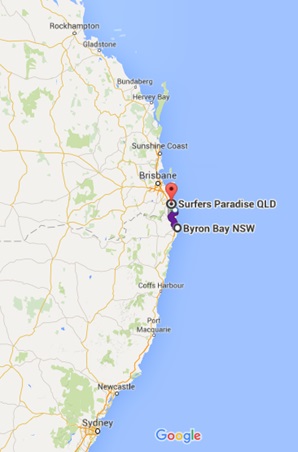
Surfers Paradise (Day 7) - characterised by nightclubs, shopping and relentless entertainment, Surfers Paradise is more of a city than a town with lots of high rise apartments gracing the skyline over the surf beach and river running inland. At the heart of the city is Cavill Mall, which runs through the shopping and entertainment district and is one of the busiest shopping strips in Queensland, and the centre of activity for night life. Whilst we didn't surf here, the beach strip is very well laid out with modern bathrooms, showers and water fountains all along the beach. I enjoyed a 2 hour kayak up the river in the morning, before an afternoon relaxing on the soft sand of the clean, golden beach. For the afternoon we strolled through the markets along the Esplanade (every Wednesday and Friday from 4-8pm) before stopping at one of the many eateries. We stayed at Surfers Paradise for one night only but there is plenty more to do if you want to stay longer - sea kayaking safaris, snorkelling, dolphin boat trips, bush walking, hot air balloon rides, early morning flights over the gold coast, bungee jumping, horse riding, scuba diving, Springbrook National Park and lots of shopping. The Greyhound bus to Brisbane is a short hop of around 2 and a half hours.
Travelling from Surfers Paradise to Brisbane
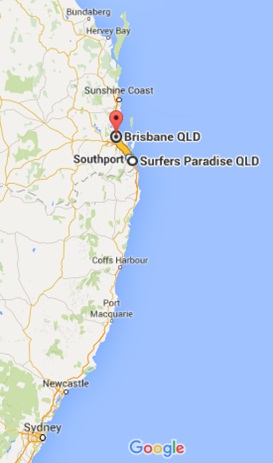
Brisbane (Day 8-9) - Brisbane is the capital and most populous city in the state of Queensland. Situated inside the bend of the Brisbane river about 9 miles from its mouth at Moreton Bay, the city was founded upon the ancient homelands of the Indigenous Turrbal and Jagera peoples. We stayed at the Brisbane City YHA, the best feature of which was the cool rooftop pool. On the first day we went to the Brisbane Botanical Gardens and Sir Thomas Brisbane Planetarium, about 3 miles from the city centre and located at the top of Mount Coot-tha, which proved to be a moderately challenging climb (there is a bus service if you prefer), affording great views over the city. The Planetarium features a 12.5m planetarium theatre where we saw an interesting show about the search for life beyond our solar system. There are also extensive space exploration and astronomy displays in the Planetarium's Foyer, including a replica of Neil Armstrong's space suit and lots of spacecraft models. The Botanical Gardens are free to enter with some great displays and as you would expect a very relaxing environment away from the hustle and bustle of the city centre.
In the morning of our second day in Brisbane we went rock climbing at Kangaroo rocks at Kangaroo Point, south of the river at Brisbane. Kangaroo Point has 20 metre cliffs where you can take in the best views of the river, city and, of course, Brisbane's most recognisable icon, the famous Story Bridge. There are climbs of various levels of difficulty to suit everyone, including beginners! We climbed with a company called Riverlife who run sessions guided by qualified and experienced instructors. No experience is necessary and each session includes full instruction, a safety briefing and equipment (helmet, harness, rope and chalk).
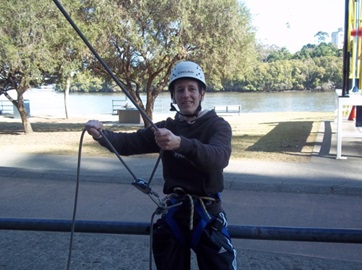
At the end of day 9 we took the Greyhound bus to Hervey Bay, gateway to Fraser Island.
Travelling from Brisbane to Hervey Bay
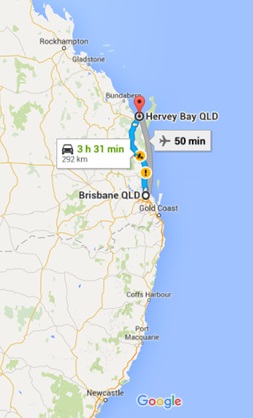
Hervey Bay / Fraser Island (Day 10-11) - named after an English Casanova, Hervey Bay is a series of calm beaches with a seductive charm, well known for whale watching in Platypus Bay to the North and access to nearby Fraser Island. It has long sandy beaches, calm blue ocean and a relaxed, unpretentious local community lure. For the rest of the first day we hired bikes to explore the coast and its various beaches and coves. We spent the evening at Hervey Bay YHA, located an easy walk from the nearby beaches and surrounded by tropical gardens with large pool, spa and even tennis and basketball courts!
On day 11 we took the ferry over to Fraser Island, a World Heritage-listed site made entirely of sand. Fraser Island has pristine beaches, beautiful lagoons and a rainforest habitat with loads of interesting plants and wildlife including turtles, curlews, ferns, mangrove colonies, parrots and dingoes (wild dogs - beware!). We went on a 4x4 tour with Fraser Island Adventure Tours in a comfortable 20 seat vehicle which proved to be a great way to see the island. I took the opportunity to do a scenic coastal flight at one of our stop off points, which took off from the beach and provided stunning views over the island and nearby coastline. Most groups stay the night on the island where the YHA bar offers a great night out.
Travelling from Hervey Bay to the Whitsunday's Coast

Whitsunday's Coast (Day 12-16) - the Whitsundays are made up of 74 Island Wonders, on Queensland's beautiful tropical coast, 66 of which are in their natural state with no buildings or resorts. At the heart of the Great Barrier Reef, the stunning natural landscapes of the coast and islands are dotted with secluded beaches and friendly towns. The best way to see the Whitsundays is on a sailing trip. Most trips start from Airlie Beach with some being sleep aboard whilst others stay at vacation villages near the islands. We went on a three day live aboard sailing trip on the Solway Lass (http://www.solwaylass.com/) which I would highly recommend.
Solway Lass was Sydney's Tall Ship from 1985-1999 sailing up and down Sydney Harbour twice a day, before being purchased to provide cruises on the Whitsundays Islands in 1999. The large decks on Solway Lass provide guests with plenty of room to move about. We were looking for a "hands on" sailing trip so joined in hoisting the sails and took a turn sailing the ship. This is optional though so if you prefer there is no problem with just finding your own deck space to sunbathe, relax and take in the magnificent views of the Whitsundays Islands whilst you sail past Whitehaven Beach, Hayman Island, Hook Island, Hill Inlet and Nara Inlet.
During our tour we snorkelled the fringing coral Reefs which extend right from the islands, swam in the perfect turquoise waters, bush walked to scenic lookouts and explored the magnificent Whitehaven Beach. While at anchor there is also the tarzan rope swing, bow net (great for relaxing) and of course plenty of ice cold beers, cocktails or wine from the licensed bar to enjoy whilst watching the sunset. The map below shows typical stops on the Whitsundays sailing trip and is the format we followed, but itineraries may differ depending on the weather and the Captain's judgement.
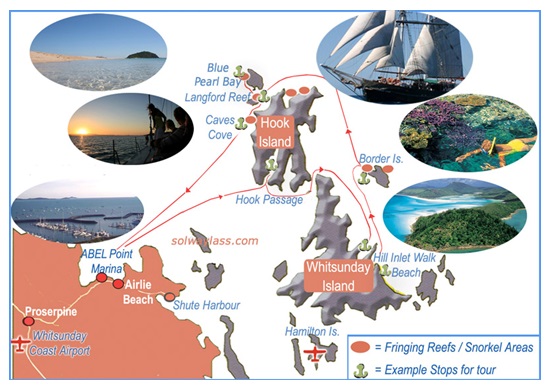
3 Day Solway Lass Whitsunday Sailing Trip Itinerary
- Day 1 - check in at the Solway Lass shop on The Esplanade Airlie Beach by 4:30pm. Luggage can be left at the office for transfer to Abell Point Marina. This allowed us to take a stroll along Airlie Beach and have a meal before heading to the marine at 6:30pm. The ship departs at 7:30pm, sailing to the overnight anchorage point with a light supper served at 9:30pm.
- Day 2 - after breakfast we sailed to Tongue Bay for a guided bush walk to the Hill Inlet Lookout, a spectacular lookout over Whitehaven Beach. After rejoining the ship for lunch we then headed to Whitehaven Beach. This was my personal highlight of the trip where I snorkelled over rays and spent about an hour following a turtle near the shore. In the afternoon we set sail heading north along the eastern side of Hook Island, anchoring for the night in one of the many bays in Hook Island.
- Day 3 - I took up the option for a scuba dive in the morning on the fringing coral reefs which extend right from the edge of the island. Whilst there is plenty of marine life to see, I found the coral in this area to be less impressive than the locations accessible from Cairns and Port Douglas further north. After lunch we sailed to another anchorage for a spot of snorkelling, swimming or relaxing on the beach. In the evening we anchored from Blue Pearl Bay of Hayman Island with spectacular sunset photo opportunities, ahead of our return to the marina the next day
We stayed at the YHA Airlie Beach for a final night after the Solway Lass trip, rounding off the trip with a night out with our crewmates before departing for Townsville and Magnetic Island.
Travelling from Airlie Beach to Townsville/Magnetic Island
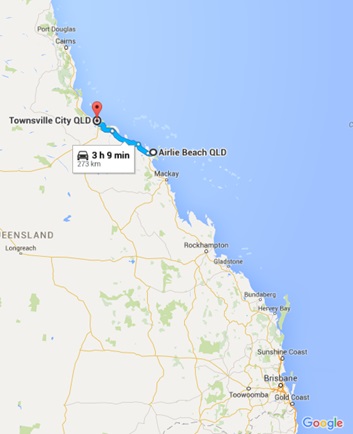
Townsville/Magnetic Island (Day 17-19) - positioned between a brooding red hill and a sparking blue sea, Townsville is a tidy and modern-feeling spot with plenty to offer. We spent the first day exploring some excellent museums, the huge aquarium, endless esplanade and vibrant nightlight. The city is pedestrian friendly with grand, refurbished 19th-century buildings and lots of landmarks.
In late afternoon we hopped on a short ferry ride to Magnetic Island, a rocky coastal island just off the coast of Townsville. The island boasts 23 pristine bays and beaches, fringing reefs and a collection of villages with a great community feel. Quite mountainous, the island is home to koalas, rock wallabies, brush-tail possums and an abundance of birds. Magnetic Island took it's name from an incident in Captain Cook's log book when he sailed past the island in 1770, recording in his journal that the ship's magnetic compass "would not travis well when near it". Nearly 70% of Magnetic Island is National Park with 24km of tracks to guide visitors through varied terrains. The permanent population of the island is 2,500, mainly centred around the four villages - Picnic Bay, Nelly Bay, Arcadia and Horseshoe Bay.
After landing on the island we took a minibus to our YHA accommodation at Horseshoe Bay. The Magnetic Island YHA was comfortably the best place we stayed throughout our trip in Australia and is one not to miss. The hostel accommodates guests in private A-frame bungalows next to a wildlife sanctuary. If you like wildlife you are in for a treat! The adjacent Bungalow Bay Koala Sanctuary - part of the YHA - does 3 tours daily and gives you the chance to see turtles, hold lizards, snakes and baby crocodiles, feed parrots (with a sunflower seed between your teeth if you're brave enough!) and hug a koala bear. The best part is at the end of the day when guests can get involved with feeding the parakeets. Parakeets are small parrot-like birds with a green body, gold and red chests and blue heads. The feeding session quickly turns into a frenzy and if you're happy to get involved and don't mind the odd harmless accidental scratch from their little claws it is great fun. At one point we had 4 parakeets on each arm and two on our heads!
In the evening the hostel's open-air deck and restaurant are opened up. When we were there the hostel hosted an entertaining game of coconut bowling with giant jenga, pictionary, pizza and trivia nights and bingo seeming to be themes on other evenings. Bar staff and other guests are really friendly, the atmosphere very relaxed and Horseshoe Bay only a few minutes walk away if you want an evening stroll.
On our second day at Magnetic Island we booked a day of horse riding with Horseshoe Ranch, a little way inland from Horseshoe Bay. This offered a day of trekking on horseback through native Australian bush land with the sun on our backs and stunning views across the island before arriving at the pristine Horseshoe Bay beach. When we reached the beach we unsaddled our horses and experienced the sensation of riding them bareback into the ocean. The horses are well-schooled and very calm natured so the first time riders in the group found it no problem with experienced, friendly guides on hand to assist. Two hour rides depart from the ranch at 8:30am and 2:30pm each day.
We returned to the mainland at the end of the second day on Magnetic Island before hopping on the Greyhound bus again to head further north to Cairns, gateway to the Great Barrier Reef.
Travelling from Townsville to Cairns
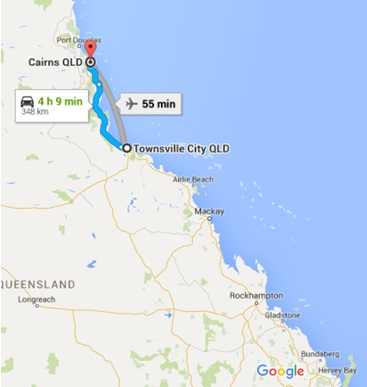
Cairns (Day 20-25) - during our first morning in Cairns we checked out the Cairns Botanical Gardens, a tropical paradise where you can explore the beauty of tropical plants, relax in stunning surroundings and learn about tropical flora and horticulture. We then explored various forest trails before heading to the nearby Tjapukai Aboriginal Cultural Park for a hands-on multi-cultural afternoon/evening under the guidance of Aboriginal and Torres Strait Islander people. Tjapukai allows visitors to explore the rich history of the world’s oldest living culture, dating back over 40,000 years. We got to practice spear and boomerang throwing, watch a didgeridoo show, learn about hunting and weapons, take a guided bush food walk and watch a night fire dance performance. The evening was wrapped up with a tasty meal.
On our second day in Cairns we took a trip on the Kuranda Scenic Railway, running from Cairns to the nearby town of Kuranda. This is a unique journey snaking up the Macalister Range through a tropical paradise framed by rugged mountains with waterfalls tumbling into deep ravines. The route provides stunning views of world Heritage-listed rainforest that's millions of years old. The Wet Tropics are amongst the oldest on earth and home to an incredible array of plants and animals, including spectacular orchids and strangler figs in a lush green world. Rising from sea level to 328m, the journey to Kuranda passes spectacular waterfalls and into the stunning Barron Gorge. The journey includes an English commentary and all passengers receive a commentary companion which includes information on the history of the railways construction, a trip map and a map of Kuranda. The journey itself was the highlight for me although when you reach Kuranda there is a rich assortment of interesting attractions and unique shopping experiences.
The third day in Cairns was the first of three Great Barrier Reef diving days! I chose to use a company called Quicksilver (http://www.quicksilver-cruises.com/index.php) who had strong reviews and were very professional and well run in my experience. The dive trips are expensive but it's an absolute must, especially if you're already a qualified diver as you can see so much in one day over the course of three dives. There is no need to go to great depths as the best coral and marine life and most vivid colours are just a few metres down. In fact, aside from having to dive down to get really up close, snorkellers won't miss anything that scuba divers can't see.
The journey out to the Reef is around 40 minutes to 1 hour to get to the best spots and my top tip is to take travel sickness tablets if you have a tendency to get at all queasy as the seas can get reasonably choppy. We went to the renowned Agincourt Reef, a jewel-like ribbon reef on the very edge of the Great Barrier Reef.
The Quicksilver boat delivers everything you could ask from a diving trip with comfortable seats, toilets, basic changing facilities, a large area for preparing kit and doing buddy checks, extensive diving platform and lunch, drinks and snacks served throughout the day. Once you're diving the experience is unforgettable, engaging all your senses and taking you into another realm. Expect to be amazed by the up close views of dazzling corals, sea turtles, rays, sharks and tropical fish of every colour and size.
Day 4 in Cairns was our white water rafting day. In hindsight we crammed in the activities at Cairns and were pretty tired waking up on the fourth morning, but don't regret it for a moment. The Tully River is Australia's best and most famous one-day white water rafting experience. It is definitely a full day with Cairns pick-up at 6:30am followed by around 5 and a half hours of grade 4 white water rafting over more than 45 rapids through the World Heritage Rainforest with return to Cairns by 6pm. Cliff jumps, rapid swimming and raft surfing were also thrown in for good measure. We did the "Xtreme Tulley" with a company called Raging Thunder Adventures who made it an energetic, fun day with friendly guides who were multilingual and great conversationalists (funny without being overly annoying). Everyone in the raft felt they were in control the whole time and could just relax and enjoy themselves with a quality lunch and snacks/drinks throughout the day.
On day 5 we took the Skyrail Rainforest Cableway, which runs over the rainforest and gorges from Caravonica Lakes to Kuranda, a distance of 7.5km, with 2 mid-route stations. This allowed us to explore the wonders of the tropical rainforest gliding metres above the rainforest canopy in comfortable six-personal gondola cabins, seeing, hearing, smelling and becoming part of the tropical rainforest environment. This was followed by a trip to the Rainforestation Nature Park where we experienced the tropical rainforest from a different and totally unique perspective aboard an World War II Army 'Duck' amphibious vehicle. During the 45 minute rainforest tour our knowledgeable Duck Captain identified and explained fascinating plants and wildlife before splashing into the lake for a cruise then taking a tour around a tropical fruit orchard. There was also time to pop into one of the local zoos and get up close and personal with some kangaroos!
This brought our time in Cairns to an end as we hopped on the Greyhound bus for one last time for the short one hour journey to our final destination, Port Douglas.
Travelling from Cairns to Port Douglas
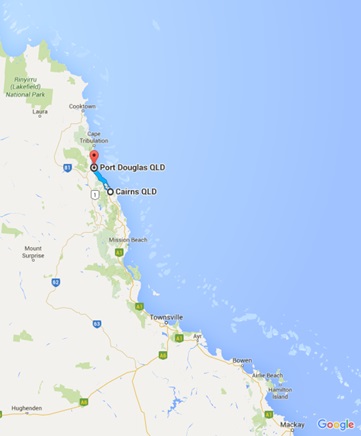
Port Douglas (Day 26-29) - on our first evening in Port Douglas we headed to the Port Douglas Yacht Club as we had heard they held free sailing with members every Wednesday from 4pm. After plucking up the courage to ask a random group of yachtsmen whether they minded if we joined them for the evening, we secured a spot on one of the boats. There were good but not overly strong winds and a calm(ish) sea, which made for some excellent sailing. If you can manage to talk your way onto one of the boats, this is definitely a well worthwhile, fun (and free) activity. As usual during our stay in Australia, we stayed at the Port Douglas YHA backpackers hostel, which was a lodge beautifully located between the spectacular Coral Sea, local rainforest and Port Douglas village. We found it to be spacious and comfortable with all the usual stuff you'd expect plus hammocks, lagoon-style pool, free wi-fi, games and books.
On the second and third days at Port Douglas we went on two further diving day trip, this time with Poseidon. As for Quicksilver in Cairns, we chose Poseidon based on their strong reviews and again found it to be a professional and well run experience. The trip to some of the best parts of the Great Barrier Reef is slightly longer from Port Douglas than Cairns but otherwise the experience was very much the same - I would never tire of seeing the beautiful vivid coral, marine life, sharks and rays. Poseidon is the only dive boat in the Port Douglas region dedicated to certified diving. We went to the Agincourt Ribbon reef on the first day trip and Escape Reef on the second, each with 3 certified dives and equally stunning.
On our fourth day at Port Douglas and final day in Australia we went 'jungle surfing' at Canopy Tours, situated in the Daintree Rainforest, a living museum where 2 UNESCO World Heritage Listed areas collide. This is essentially a series of zip wires through the forest canopy which are both exhilarating and give you the opportunity to marvel at the tropical rainforest surroundings. After carefully choosing our helmets (Cat woman and Homer Simpson) we buckled up and shuffled off the series of wooden ledges to enjoy the ride.
There was just enough time left in the afternoon to visit the Port Douglas Wildlife Habitat centre to meet some koala bears, pythons, crocodiles, amazing Australian birds and kangaroos for the final time. This proved to be a great way to round off our trip with my personal highlight being hand-feeding a baby kangaroo.
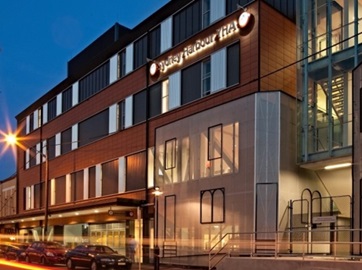
General Information
Accommodation
We stayed in YHA accommodation throughout, which from experience was a very good choice
Other hostels can sometimes be excellent, but in general from speaking to fellow backpackers smaller chains or independent hostels just cannot be relied upon to deliver a consistently good experience. For our group, using YHAs took the hassle and stress out of travelling knowing that they are always well organised with comfortable accommodation, kitchen, lounge areas, reliable wi-fi, good security, friendly staff, etc.
Transport
We used Greyhound buses throughout our trip, which proved to be cheap, comfortable and pretty quick. Greyhound is Australia's national bus service and in my view they succeed in providing comfortable, hassle-free and affordable coach services to people of all ages. We used a Hop On Hop Off travel pass booked in advance, which seemed to be the easiest option to avoid hassle and stress whilst you're on the move.
